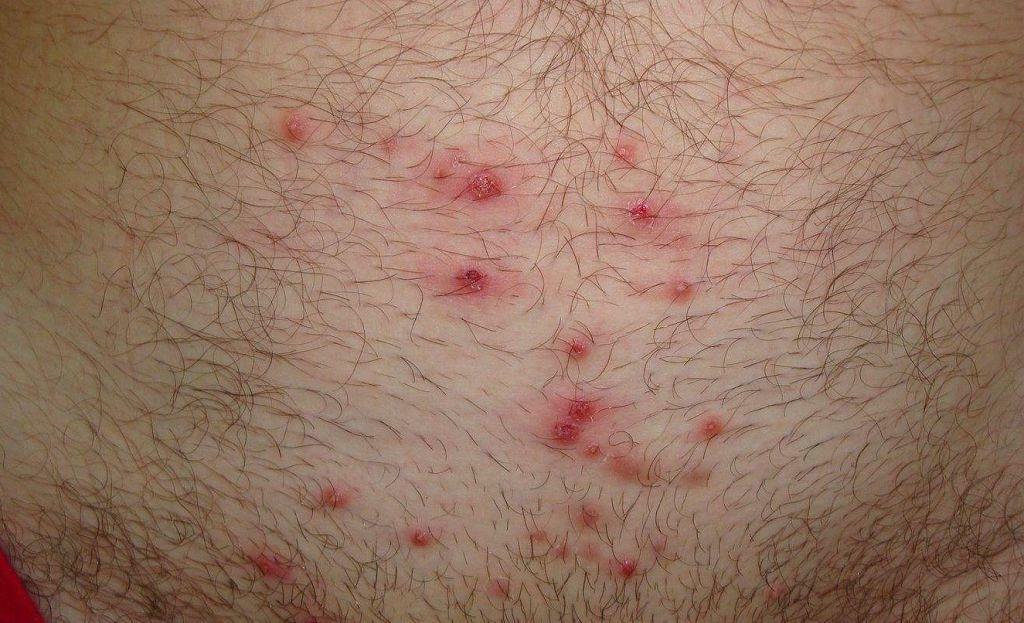Pseudomonas aeruginosa is a gram-negative bacterium. She belongs to the genus of pseudomonads. The optimal habitat is soil and water bodies.
Pathogenic microorganisms infect various internal organs and systems of the human body, provoking numerous pathological diseases. Without the right therapy, the patient develops serious complications, including death.
Record content:
- 1 Views
- 2 Stages and degrees
- 3 Symptoms
- 4 Reasons for the appearance
- 5 Diagnostics
- 6 When to see a doctor
- 7 Prophylaxis
-
8 Treatment methods
- 8.1 Medications
- 8.2 Traditional methods
- 8.3 Other methods
- 9 Possible complications
- 10 Video about Pseudomonas aeruginosa
Views
Pseudomonas aeruginosa can be infected from a person who is a carrier of pathogenic microflora or is directly ill. The most dangerous are patients with lesions of the pathological processes of the respiratory system.
There are the following routes of transmission of pathogens:
| Name | Description |
| Airborne | Bacteria pathogens enter a healthy body when an infected person sneezes or coughs. |
| Contact | Infection occurs during direct contact with a sick person. Moreover, Pseudomonas aeruginosa can be in the environment for a long time. Therefore, you can get infected through common items. |
| Alimentary | We are talking about contaminated water, products without heat treatment. Pseudomonas aeruginosa is also spread through dirty hands. |

Outbreaks of infectious disease are common in health care settings. Workers disregard strict rules for the use of antiseptics. The causative agents of the disease are transmitted through a medical instrument and the hands of employees.
Stages and degrees
After entering the human body, Pseudomonas aeruginosa multiplies and passes 3 main stages of development:
| Name | Description |
| First stage | Pathogenic bacteria become attached to tissues and begin the process of reproduction. A primary focus of infection is formed. |
| Second stage | The pathogen penetrates deeper and affects the tissues, in part the bacteria are restrained by the body's defenses. |
| Third stage | The infection enters the bloodstream and spreads through the circulatory system throughout the body to the internal organs. |
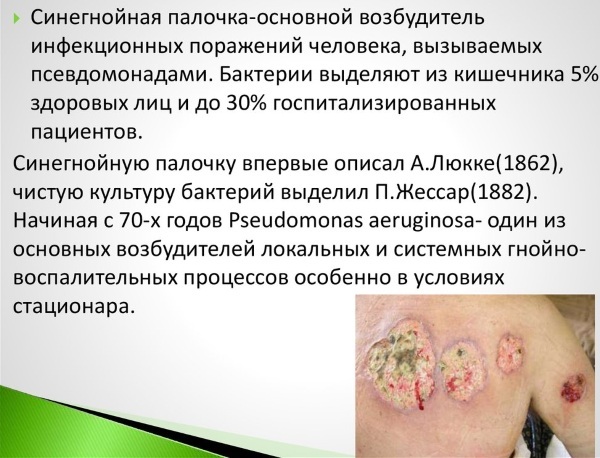
At each stage, characteristic clinical signs appear, with which it is important to go to the hospital. An infectious disease doctor will prescribe a diagnosis and, based on the results obtained, select the most effective treatment.
Symptoms
The clinical picture when the human body is infected with Pseudomonas aeruginosa depends on the localization of the causative agents of the pathology:
| Name | Description |
| Skin, adipose tissue | The ingress of pathogenic microflora into wounds, cuts, scratches or burns provokes an inflammatory and purulent process. Antibacterial resistance is high. The main feature of the development of Pseudomonas aeruginosa is the discharge of blue pus. |
| Eyes | The causative agents of the disease cause severe lacrimation. The person has an increased sensitivity to light. A strong burning sensation is felt in the affected eye. Vision decreases. If the infection enters the subcutaneous fat, the eyeball swells and leaves the orbit. The skin turns red and the local temperature rises. |
| Ears | The disease proceeds like otitis media. The inflammatory process is accompanied by purulent or bloody discharge from the ear canal. The infection affects the outer ear, then spreads to the middle ear and the mastoid process of the temporal bone. The patient complains of severe pain and hearing impairment. |
| Digestive system organs | Symptoms of toxic and food poisoning appear. We are talking about diarrhea, severe abdominal pain, nausea, vomiting, poor appetite. |
| Meninges | As a result of a lumbar puncture, meningitis appears. The pathology is characterized by severe headaches, nausea, stiff neck muscles and impaired consciousness. |
| urinary system | Urethritis, cystitis or pyelonephritis develops. Pathological processes are accompanied by frequent urination, painful sensations in the lower abdomen and lower back. |
| Nails | Pathogenic microflora negatively affects the nail plate, softening it. The surface darkens. The infection, as the pathological processes progresses, penetrates deeper into the tissues. A special pigment (pyocyanin) produced by pathogens paints the nail plate in a blue-green color.
|
| Respiratory system | Pseudomonas aeruginosa provokes pneumonia. The pathology is characterized by severe shortness of breath, cough with the release of purulent sputum. The man complains of chest pains. The defeat of the upper respiratory tract (nose, throat) provokes sinusitis, pharyngitis or tonsillitis. |
Regardless of the area of the lesion, a person's general health worsens. The body temperature rises, there are problems with appetite, sleep, weakness and weakness are present.
Reasons for the appearance
In most cases, opportunistic microflora is transmitted during inpatient treatment.
There are numerous provoking factors that increase the risk of infection in the body:
- weak immunity, against the background of which its resistance to various infections decreases;
- long-term inpatient treatment;
- getting the pathogen directly into the human body;
- inflammatory process in the organs of the respiratory system (chronic bronchitis, pneumonia);
- neurosurgical surgery;
- HIV infection;
- congenital anomalies of the genitourinary system;
- long-term treatment with broad-spectrum antibacterial agents.
The risk of infection also increases after previous illnesses, against the background of which the body's defenses weaken. At risk are small children, elderly people (60 years and older). Concomitant pathologies also increase the chances of infection.
In inpatient departments of medical institutions, you can become infected with Pseudomonas aeruginosa through treatment in surgery, a burn center and a maternity hospital.
Diagnostics
Pseudomonas aeruginosa is a dangerous disease that a doctor will help to identify. Specialists of various profiles (therapist, infectious disease specialist) are engaged in diagnostics and treatment. It all depends on the source of the disease and the patient's condition.
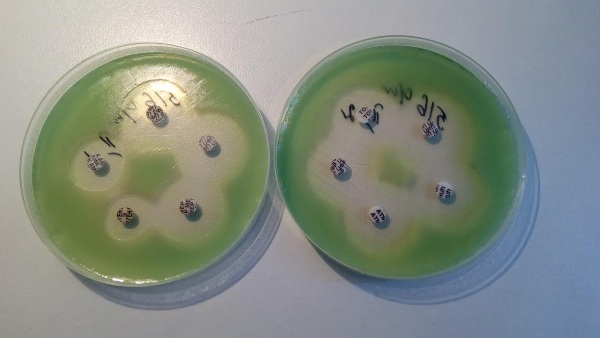
Patients are assigned the following diagnostic measures:
| Name | Description |
| Bacteriological culture | Smears are taken from the foci of the inflammatory process (pharynx, urethra, wounds). |
| Laboratory research | Analysis of blood, urine, cerebrospinal fluid, effusion. The results show the general condition of the body and the development of the inflammatory process. |
| Polymerase chain reaction (PCR) | The most informative diagnostic method that allows you to identify single cells of infection. The results will help not only identify the pathogen, but also its type. |
| Serological tests | Allows you to determine the specific antibodies in the patient's blood in relation to Pseudomonas aeruginosa. An indirect diagnostic method used in case of impossibility of identifying pathogens of pathology by other tests.
|
The results of bacteriological and histological studies make it possible not only to determine the type of causative agent of the disease, but also to assess the sensitivity of microorganisms to antibacterial drugs. Serological tests are prescribed for patients with infection of internal organs or with pneumonia.
Given the degree of development of pathological processes and the location of the focus, patients can additionally be prescribed computed tomography (CT), chest X-ray. Magnetic resonance imaging (MRI) also, lumbar puncture, bronchoscopy, and ultrasound (ultrasound).
When to see a doctor
An infectious disease specialist is involved in diagnostics and treatment. But in some situations, given the cause of infection and the patient's condition, additional consultation of other specialized specialists (cardiologist, surgeon, gastroenterologist, otolaryngologist, dermatologist).
It is important to go to the hospital as soon as the first signs of infection appear. Timely treatment will avoid life-threatening complications.
Prophylaxis
Pseudomonas aeruginosa is a serious pathology, but it can be prevented if you remember the useful recommendations of the doctor:
- Timely and correct treatment of chronic diseases.
- It is recommended to harden immunity.
- It is important to stick to a healthy lifestyle. This includes proper nutrition, strengthening the body, moderate physical activity.
- Bad habits also negatively affect the state of immunity (abuse of alcoholic beverages, tobacco products).
- Specific prophylaxis against Pseudomonas aeruginosa is the use of a bacteriophage.

- Before a planned surgical intervention, doctors recommend that patients, as a prevention of infection, be vaccinated.
In hospitals, medical personnel should carefully treat instruments and equipment with special antiseptic agents, carbolic acid, and hydrogen peroxide. When a baby is born, so that the infection does not enter his body through the umbilical wound, it should be carefully treated with special preparations.
Outside the hospital, the risk of infection with Pseudomonas aeruginosa is lower, but it is important to remember about prevention. It is easier to prevent a disease than to fight it.
Treatment methods
The treatment regimen is selected by an infectious disease doctor. The specialist takes into account the test results, the degree of development of pathological processes and the individual characteristics of the patient's body.
The main drug used to fight infection remains the antibiotic. In some situations, patients are immediately prescribed a complex of 2 types of drugs in order to have the maximum effect on the causative agents of the disease.
Medications
Medications should be taken strictly according to the doctor's prescription, as medications provoke side effects.
| Name | Application | Efficiency |
| Ceftazidime | The medicine is administered intravenously or intramuscularly. The adult dosage is 1000-2000 mg 2-3 times a day. | An active antibiotic of the cephalosporin group. The drug has a bactericidal effect, disrupting the cell membrane of the pathogen of Pseudomonas aeruginosa. |
| Cefepim | For adults, the drug is administered intravenously or intramuscularly, 1 g every 12 hours. The course of therapy lasts 7-10 days. | The drug has a destructive effect on gram-positive and gram-negative pathogenic microorganisms. |
| Amikacin | The medicine is used more often intramuscularly. The adult dosage is 10 mg / kg, 2-3 injections every day. The treatment is carried out for 7-10 days.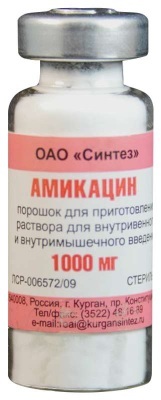 |
Broad spectrum antibacterial agent. |
Additionally, symptomatic therapy is carried out, the infectious disease doctor prescribes the following drugs:
| Drug group | Name | Application |
| Bacteriophages | Piocioneus, Pyobacteriophage | Medicines contain viruses that have a detrimental effect on gram-negative microorganisms. The drugs are used externally and internally. The course of therapy lasts 5-20 days, taking into account the human condition and the development of pathological processes. The adult dosage is prescribed by a doctor and ranges from 2 to 50 ml per day, depending on the cause of the disease and the focus of infection.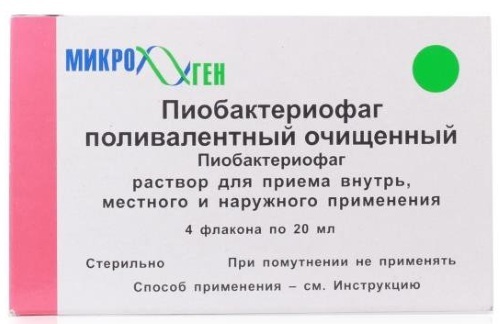
|
| Probiotics | Probifor, Atzilakt | The drugs help restore healthy intestinal microflora. The medicine is taken orally with meals. The recommended dosage for an adult is 2-3 capsules 2-3 times a day. The course of therapy lasts 3-5 days. |
The Pseudovac vaccine allows the formation of active immunity in relation to pathogenic microflora. In some situations, it is allowed to use homeopathic remedies, if there are no serious contraindications. To increase the protective forces of patients, vitamin complexes are prescribed.
Traditional methods
Pseudomonas aeruginosa is an infectious disease, the treatment of which is carried out by complex methods and strictly under the supervision of an infectious disease doctor.
It is categorically impossible to take medications on your own, since you can provoke serious deterioration in health. The same goes for traditional medicine recipes.
Horsetail, aspen leaves, tea tree, chamomile help to alleviate the course of pathological processes and reduce the inflammatory process. But prescriptions should be used after consulting a doctor.
| Name | Recipe | Application |
| Herbal collection | Mix horsetail or plantain with aspen in equal parts. Pour boiling water over the mixture. Soak for 30 minutes and drain well. | The finished medicine should be consumed with Pseudomonas aeruginosa, 30 g before meals, previously diluted with a small amount of liquid. The broth can also be used to rinse the throat, nose. Herbs have antimicrobial and anti-inflammatory effects. |
| Natural antibiotics | Tea tree oil (1 drop) is mixed with 1 dl. olive oil. | The finished medicine should be drunk once a day with a little water. |
| Vitamin infusion | Viburnum berries (1 tablespoon) pour hot water (2 tablespoons). Withstand 1 hour in a thermos, take according to the scheme. | The finished drink is recommended for patients with Pseudomonas aeruginosa 100 ml 4 times a day instead of tea. |
| Calendula | Plant flowers (5 pieces), fresh or dry, pour boiling water (250 ml). The finished mixture should be infused for 4 hours. Add alcohol tincture of propolis (1 tablespoon). | The medicine should be taken 50 g 3 times a day. Infusion negatively affects the causative agents of the disease, increases the body's defenses. It also slows down the reproduction of pathogenic flora. |
| Aspen | Finely chop the leaves of the plant and add 2 tbsp into a saucepan. Add boiled water, put on low heat and cook for 25 minutes. Then set aside and cool for 1 hour. The finished medicine should be filtered through cheesecloth. | The product is taken orally, 30 ml before each meal. |
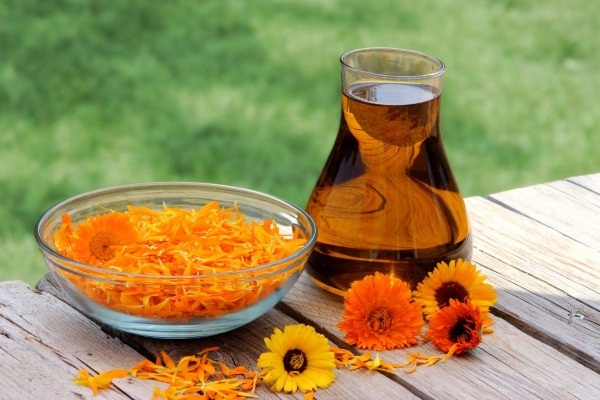
Beekeeping products have antibacterial and antiseptic effects. Propolis is a part of numerous decoctions, infusions, ointments for local use.
Folk remedies will not help to completely eliminate Pseudomonas aeruginosa, it is important to adhere to complex treatment. Recipes of healers and healers strengthen the immune system, reduce the inflammatory process. We must not forget about contraindications and individual sensitivity to the components used.
Other methods
Complex therapy of Pseudomonas aeruginosa involves adherence to a strict diet by patients. It is necessary to exclude fried, salty, spicy foods from the diet. Give preference to vegetables and fruits that contain a large amount of vitamins and minerals that support immunity.
Progressive processes with Pseudomonas aeruginosa and purulent lesions require surgical intervention. Wounds on the body must be deeply and thoroughly treated, and the surgeon removes the dead cells.
Complications such as diabetic foot, in some situations, require lower limb amputation in order to save the patient's life. Surgical intervention is indicated for patients also with perforation of the digestive system, an abscess in the intestinal region. The same goes for necrotic processes.
Possible complications
Pseudomonas aeruginosa is an infectious disease that leads to dangerous consequences.
In the absence of timely therapy, the developing pathogenic microflora provokes the following complications:
| Name | Description |
| Sepsis | More common in people with severe burns. Sepsis also occurs as a result of Pseudomonas aeruginosa against the background of leukemia. Infectious agents enter the bloodstream, spread throughout the body and provoke serious complications in the work of internal organs and systems.
|
| Pneumonia | A disease characterized by an inflammatory process in the lungs. It occurs in humans with the formation of malignant tumors against the background of Pseudomonas aeruginosa. Bacterial pneumonia can develop after tracheostomy.
|
| Panophthalmit | Pathology that develops against the background of an infectious lesion of the body with the formation of ulcers in the cornea of the eyes. |
| Purulent thrombophlebitis | Pathological processes occur in the saphenous veins of the lower extremities and provoke inflammation of their walls. Purulent lesion occurs with secondary infection against the background of vascular catheterization. |
| Meningitis, encephalitis | The disease is accompanied by inflammation of the meninges and subarachnoid space. More often, with Pseudomonas aeruginosa, it develops in a person after surgery on the brain. |
| Endocarditis, osteomyelitis | Pathology is characterized by an inflammatory process in the inner lining of the heart. The disease of an infectious origin often leads to the death of the patient. |
| Gangrene | The affected tissues die off to their full depth. |
In babies, in the first days of their life, Pseudomonas aeruginosa provokes serious complications in the form of an inflammatory process that affects the meninges and the digestive tract. You are also more likely to develop a serious complication with regular urinary catheter changes. The infection enters the urinary tract.
Complications of Pseudomonas aeruginosa are accompanied by the following clinical signs:
- open wounds give off blue-green pus;
- the inflammatory process provokes redness not only of the affected area, but also of nearby healthy areas of the skin;
- wounds on the body are covered with a purple, brown or black crust.
Complications can be prevented if you go to the hospital in a timely manner when the first signs appear and undergo treatment prescribed by an infectious disease doctor.
With Pseudomonas aeruginosa, the prognosis in most cases is favorable. Deterioration is observed with the progression of pathological processes and an increase in the severity of disorders in the functioning of internal organs.
Septic shock, which entails an infectious lesion, occurs in the absence of correct and timely therapy. In such a situation, there is a high probability of death, the survival rate is 30-60%.
Video about Pseudomonas aeruginosa
Pseudomonas aeruginosa:

